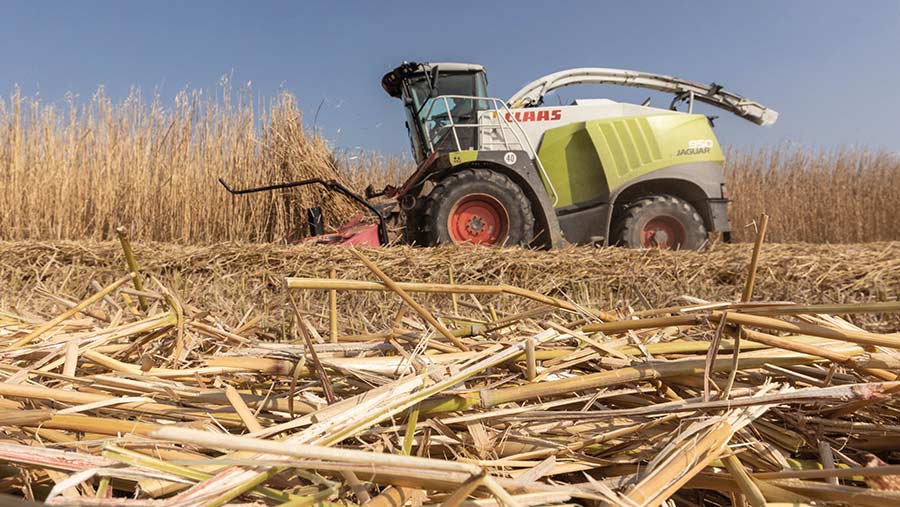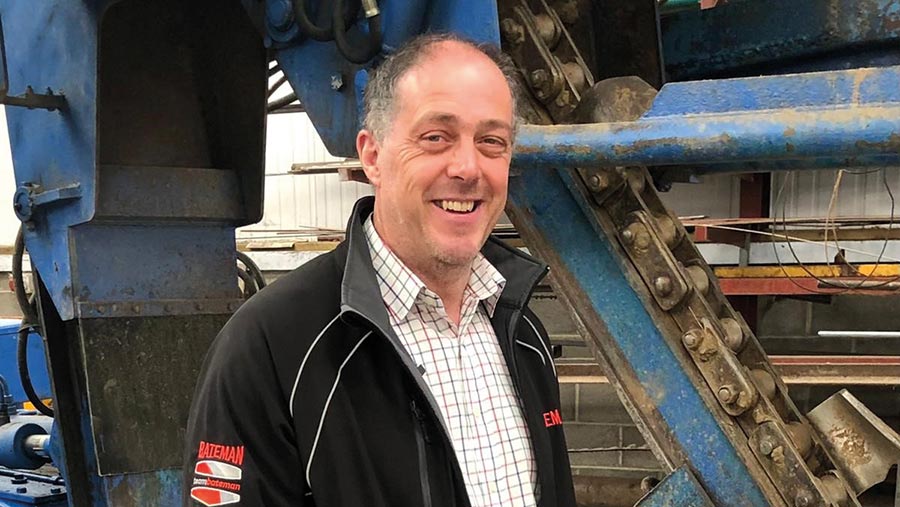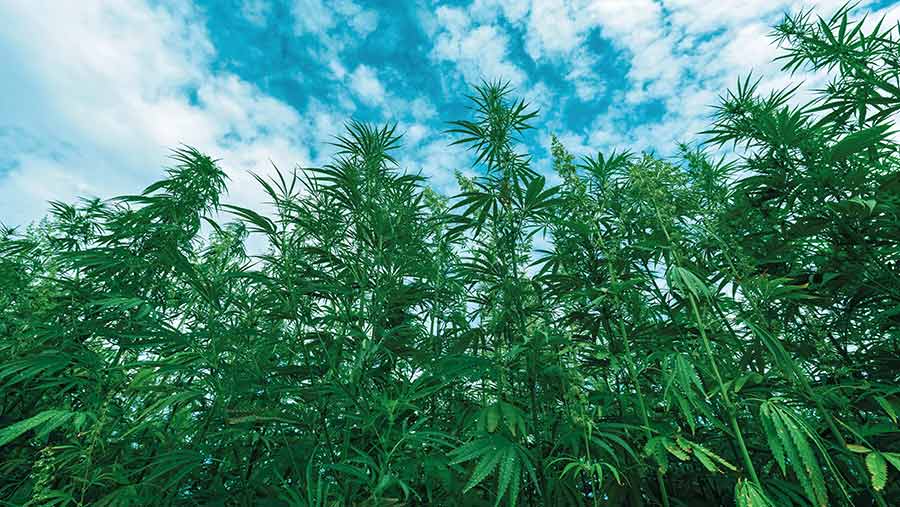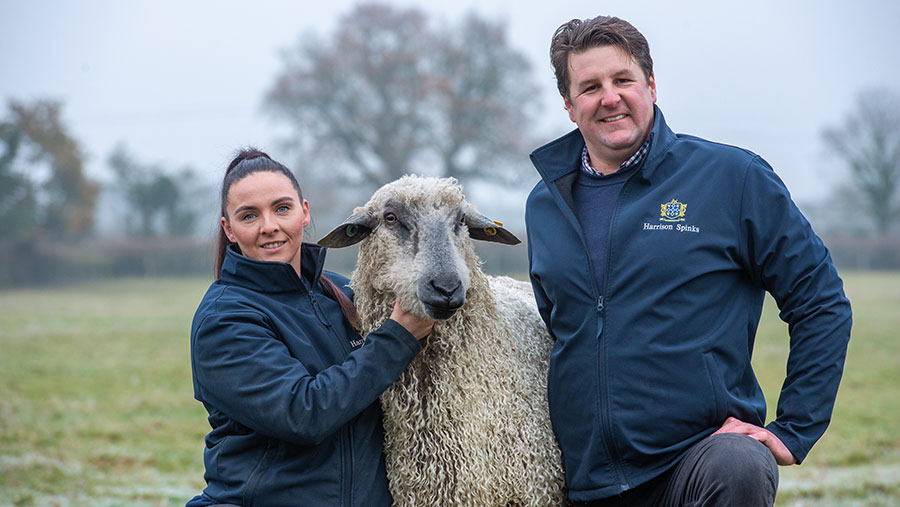Why Yorkshire farmers are growing miscanthus and hemp
 © Tim Scrivener
© Tim Scrivener Both hemp and miscanthus are easy-to-grow niche crops that have secured a place in arable rotations across North and East Yorkshire.
Grown for the biomass market, miscanthus can help underpin arable businesses by providing a regular income from riskier blocks of land, such as fields prone to drought or flooding.
See also: Why Norfolk farmer squared off fields with miscanthus
Hemp is also being grown in Yorkshire, being a valuable raw material for the manufacture of luxury mattresses, along with local flax and sheep’s wool.
Farmers Weekly finds out why these two crops are being grown by arable businesses and what’s involved in growing them.
Miscanthus for biofuel
Miscanthus has a valuable role in generating a consistent income from poorer areas that are marginal for combinable crops.
It could be a field corner prone to flooding or drought.
For Lightwater Valley Farms, miscanthus is being grown “where it was a struggle to get a crop off every year”, explains farm manager Jonathan Fryatt.
“For some, stewardship may be an option, but when you have a large shoot and you can’t drive through it, it’s not going to work.”
The 23.7ha of miscanthus on the farm near Ripon in North Yorkshire was established in three stages over nine years:
- 8.5ha planted in 2012 with 50% grant
- 5.7ha in 2015 with 50% grant
- 9.5ha in 2021 with no grant.
For the latest block, which cost £1,500/ha to establish, the first harvest is due this spring and Mr Fryatt explains that it is all on contract to Terrevesta with a fixed price each year and collections made during June.
The miscanthus goes to the renewable energy power station near Brigg in Lincolnshire.
Last year, the margin was £340/ha, which equates to £91/t, and it was eligible for Basic Payment Scheme (BPS) payments.
“It’s better than establishing a game cover crop each year,” he says.

Jonathan Fryatt © Jonathan Fryatt
Miscanthus has also earned a place on Rob Meadley’s 242ha family farm near Holderness in East Yorkshire, where he grows 12ha. He is also a consultant with Brown and Co.
He explains that the crop is being grown on Carr land, which is poor land with a high organic matter content. The land is prone to flooding and droughts, and there is a colossal weed seed bank.
“We were cropping it and started to question, why farm this? You throw seed, fertiliser and sprays at it and you are not always guaranteed to get a crop off it.”
So in 2012, he decided to establish miscanthus, costing £1,500/ha (after accounting for the planting grant) which he admits is a big capital outlay.
However, April 2012 was the wettest April on record, and it affected miscanthus in the field.
“You could not spray pre-emergence herbicides and while the crop did emerge, the weed burden was very high and affected the crop,” Mr Meadley says.
It wasn’t until year three that he saw his first commercial harvest, being one or two years behind where it should be in terms of yield.
Miscanthus does not need fertiliser and does not respond to applications of nitrogen, sewage sludge etc, he explains.
“You get a yield plateau [of about 12t/ha], so it is valuable in mitigating risk between years, producing the same yield and return.”
Ongoing costs are only to cut (forage harvester £80-100/ha), bale (£7-9/bale) and lead it back to the farm (£2/bale).
However, as it is cut in March, some remedial removal of compaction may be needed by subsoiling through the crop. “And that’s about it.”
For 2022, it generated a net margin of £595/ha. “While it’s not great, it removes the potential risk of losing money on that area,” Mr Meadley says.
He adds that it will crop for 15-20 years and qualifies for Sustainable Farming Incentive (SFI) payments.
“It won’t make us rich, but will underpin the business for the coming years and is adding positively to the bottom line.”
Hemp for mattresses

© Bits and Splits/Adobe Stock
The natural fibre mattresses made by the family-owned manufacturer Harrison Spinks don’t start life in a factory, but instead on a number of farms across North Yorkshire.
The company has its own 120ha mixed farm near Tadcaster, about 18 miles from its Leeds factory.
Bought in 2009, the farm, along with other contracted growers, produces the raw materials for the sustainable mattresses.
Wool is produced by sheep reared on the farm’s pastures, and the family also grow fields of hemp and flax. These crops produce super-absorbent fibres, making the mattresses cool and dry for sleeping on.
A number of contracted partner farms also grow hemp, bringing the total area grown to just over 200ha.
This makes Harrison Spinks one of the largest growers of industrial hemp in the UK, says farm manager Liam McPartland.
The company has developed its own hemp growing system, which starts with ploughing in the autumn.
Before you can grow hemp
- As industrial hemp looks identical to cannabis, its cultivation is controlled under the Misuse of Drugs Act 1971 and farmers must be licensed to grow it
- Licenses are issued by the Home Office and last three years
- Industrial hemp applies to varieties of cannabis sativa with a tetrahydrocannabinol (THC) level of 0.2% or less
Mr McPartland uses a press behind the plough, helping retain moisture on the heavy land. “Being drilled in May, it can become too dry without the press,” he says.
Then in spring, fertiliser is applied on the ploughed ground just before drilling, which is typically mid- to late April with a combi drill.
Good establishment is key and once the canopy is developed, it will smother out weed growth, he says.

Becky and Liam McPartland © John Eveson
How the finances stack up
Although a good hemp crop will yield 7.4t/ha of straw, Harrison Spinks advises assuming 2t/ha when calculating margins, to get a fair average over several years.
For last year’s crop, growers will receive £320/t of hemp straw delivered from January 2024 onwards, and most growers store the product.
Seed for the 2022 crop worked out at £186/ha and with last year’s higher prices, fertiliser worked out at £396/ha. This figure can vary depending on the amount of manures used.
Hemp cutting starts in early August and costs £99/ha. After cutting there is a six-week retting process where the hemp is turned once or twice before being baled in early September.
He explains that retting breaks down the glues in the plant, releasing the fibres.
The straw is processed and there are three products:
- One-third fibre
- One-third shiv (woody core), which is used in construction or as horse bedding
- One-third dust, which is used for biomass heat.
Any surplus hemp fibre not used to make mattresses goes to the manufacturing of loft insulation.
Based on Harrison Spinks’ figure of 2t/ha, the gross profit for last year’s crop is £1,584/ha for January delivery. While the company is not looking for growers this year, there could be opportunities in the following season.
All those featured in this article were speaking at the recent AHDB Ripon Monitor Farm meeting.

